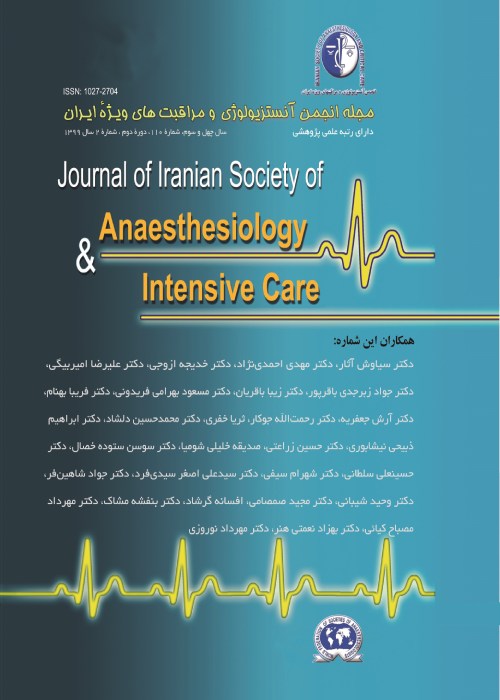Comparing Two Methods of LMA Insertion; Classic versus Simplified (AIRWAY)
Author(s):
Abstract:
Intruduction: The aim of this study is to compare two methods of LMA insertion, "classic" versus "simplified" (AIRWAY), due to factors such as: time to insertion, number of attempts, blood stained LMA, air leak around LMA, and gastric inflation. The word "AIRWAY" refers to the similarity of this method to oropharyngeal airway insertion.
Material And Methods
One hundred ASA Class I and II patients elected for lower limb orthopedic surgery but without any head and face injury or head and neck abnormality, having their tooth intact, were selected anddivided to two groups of fifty; classic and simplified. In the classic group, the index finger used as a guide, pushes the back of LMA towards the hard palate, inserting it into the pharynx till a resistance is felt and the LMA is then fixed it its place.In the AIRWAY group, the deflated LMA is entered into the mouth in a 180 degree inside-out position compared to the classic method without using fingers and is proceeded until it enters the pharynx (sudden loss of resistance) and then returned 180 degree back to its normal position to be fixed in the right place. The attempt numbers, time to insertion, complications such as laryngospasm, blood stained LMA and gastric inflation is being investigated. The data collected was analyzed be SPSS ver 1 and compared in two groups with unpaired T-Test or Mann Whitney U test by case. Again Chi-square test was used to analyze numerical data and p<0.05 was considered as meaningful.Results
Demographic data such as age, sex and ASA Class, demonstrate no meaningful statistic differencebetween the two groups.Successful first attempt in AIRWAY group (86%) had no meaningful statistic difference with the classic group (80%) (p>0.05). The overall success rate in LMA insertion (within two attempts) was 100% and 82% in AIRWAY and classic groups respectively (p>0.05) and 11 patients with failed insertion attempts, were excluded from the study. The time for successful insertion was meaningfully less in the AIRWAY group compared to the classic one (p<0.0001). In the classic group 32% of LMAs became blood stained compared to 16% in the AIRWAY group, which the difference was not meaningful. No other complications such as laryngospasm or oxygen desaturation occurred.Conclusion
Comparison of the whole advantages and disadvantages of both groups, mention that, by putting the LMA insertion time together with the low complication rates, the AIRWAY method can be assumed as a preferred simplified method with few complications for inserting LMA.Keywords:
Language:
Persian
Published:
Iranian Journal Of Anaesthesiology and Critical Care, Volume:31 Issue: 2, 2010
Page:
14
magiran.com/p704416
دانلود و مطالعه متن این مقاله با یکی از روشهای زیر امکان پذیر است:
اشتراک شخصی
با عضویت و پرداخت آنلاین حق اشتراک یکساله به مبلغ 1,390,000ريال میتوانید 70 عنوان مطلب دانلود کنید!
اشتراک سازمانی
به کتابخانه دانشگاه یا محل کار خود پیشنهاد کنید تا اشتراک سازمانی این پایگاه را برای دسترسی نامحدود همه کاربران به متن مطالب تهیه نمایند!
توجه!
- حق عضویت دریافتی صرف حمایت از نشریات عضو و نگهداری، تکمیل و توسعه مگیران میشود.
- پرداخت حق اشتراک و دانلود مقالات اجازه بازنشر آن در سایر رسانههای چاپی و دیجیتال را به کاربر نمیدهد.
In order to view content subscription is required
Personal subscription
Subscribe magiran.com for 70 € euros via PayPal and download 70 articles during a year.
Organization subscription
Please contact us to subscribe your university or library for unlimited access!


